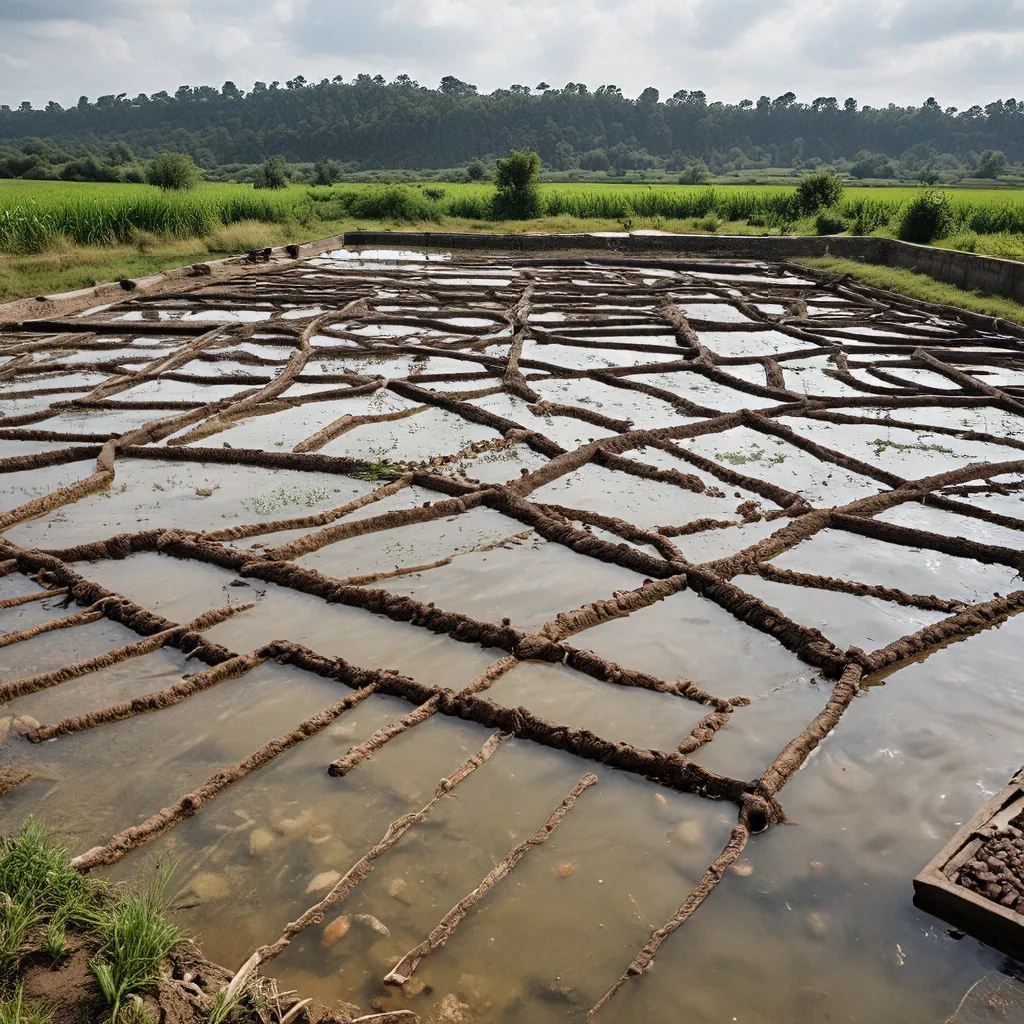
Diving into the Intersection of Wastewater and Aquaculture
You know, it’s fascinating how the world’s water and food systems are so intricately connected. As a global community, we’re facing some pretty daunting challenges – from climate change and population growth to resource scarcity and environmental degradation. But amidst all this complexity, there’s one intriguing solution that’s starting to gain some serious traction: wastewater-driven aquaculture.
Let me paint you a picture. Imagine a world where the very waste we struggle to manage becomes the backbone of a thriving food production system. Where nutrient-rich wastewater is harnessed to cultivate fish, shrimp, and other aquatic organisms, providing a sustainable and affordable source of protein and essential nutrients. It’s a concept that’s not only environmentally friendly, but also has the potential to boost food security and water security in ways we’ve never seen before.
Bridging the Gap: Wastewater as a Resource, not a Waste
You see, the traditional model of wastewater management has always been pretty linear – collect it, treat it, and discharge it. But what if we flipped that script and started seeing wastewater as a valuable resource instead of just waste? That’s exactly what the pioneers of wastewater-driven aquaculture are doing.
The basic idea is simple: Capture the nutrient-rich wastewater, whether it’s from municipal, agricultural, or industrial sources, and use it to cultivate aquatic species in an integrated system. These nutrient-dense aquatic organisms can then be harvested for human consumption or animal feed, creating a closed-loop system that maximizes resource efficiency and minimizes waste.
Diving into the Benefits: Sustainability, Food Security, and Water Security
Now, I know what you’re thinking – how exactly does this help with the bigger picture of sustainability, food security, and water security? Well, let me break it down for you:
Sustainability: By using wastewater as a nutrient source, wastewater-driven aquaculture reduces the need for synthetic fertilizers and freshwater in traditional aquaculture systems. This not only cuts down on greenhouse gas emissions and water consumption, but also helps to mitigate the environmental impacts of aquaculture and agriculture.
Food Security: In a world where hunger and malnutrition remain persistent challenges, wastewater-driven aquaculture offers a reliable and affordable source of protein and essential nutrients. This can be particularly beneficial for low-income and food-insecure communities, helping to address the nutrition gap and improve overall health.
Water Security: As fresh water becomes increasingly scarce, the ability to reuse and recycle wastewater for aquaculture can help to alleviate the pressure on limited freshwater resources. This is especially crucial in regions where water scarcity is a pressing concern, as it can reduce the competition for water between agriculture, industry, and domestic use.
Unlocking the Potential: Challenges and Innovations
Of course, transitioning to a wastewater-driven aquaculture system isn’t without its challenges. There are technical, regulatory, and social hurdles to overcome, but innovation and collaboration are paving the way forward.
On the technical front, researchers are constantly exploring ways to optimize the nutrient extraction and water treatment processes, ensuring that the wastewater is safe and suitable for aquaculture. Advancements in aquaculture technology, such as recirculating aquaculture systems (RAS), are also playing a crucial role in making these systems more efficient and scalable.
In terms of regulation, there’s a need for clear guidelines and policies that address the safety and environmental considerations of wastewater-driven aquaculture. Governments and policymakers are working to develop regulatory frameworks that can incentivize the adoption of these sustainable practices while protecting the public and the environment.
And when it comes to social acceptance, educating the public and stakeholders about the benefits and safety of wastewater-driven aquaculture is key. By highlighting the environmental and social impacts, we can overcome any misconceptions and build a culture of acceptance and support for this innovative approach.
The Future of Wastewater-driven Aquaculture: Endless Possibilities
As we look to the future, the potential of wastewater-driven aquaculture is truly endless. Imagine a world where urban centers are self-sufficient in their food production, with wastewater treatment plants doubling as aquaculture facilities. Or picture rural and remote communities leveraging this technology to boost their food security and economic opportunities.
The synergies between wastewater management and aquaculture are just too compelling to ignore. By embracing this innovative approach, we can tackle some of the most pressing challenges of our time – climate change, resource scarcity, and food insecurity – all while creating a more sustainable, resilient, and equitable future.
So, what are we waiting for? Let’s dive in and explore the transformative potential of wastewater-driven aquaculture. The future of our food and water systems depends on it.
Alpha Wastewater is at the forefront of this exciting frontier, combining cutting-edge technology and expertise to help communities and industries unlock the power of wastewater-driven aquaculture. Discover how they’re redefining the future of sustainable food and water systems.